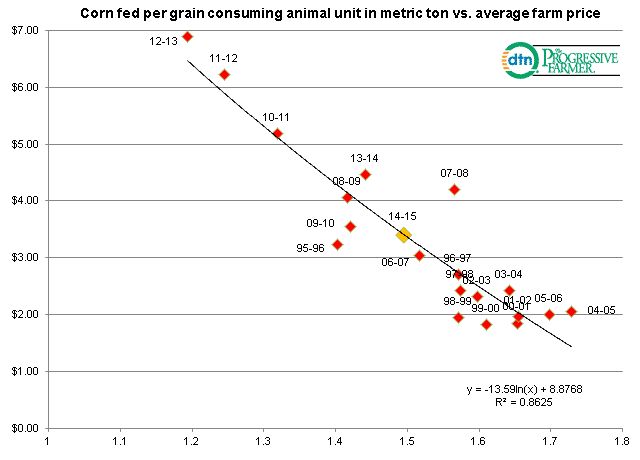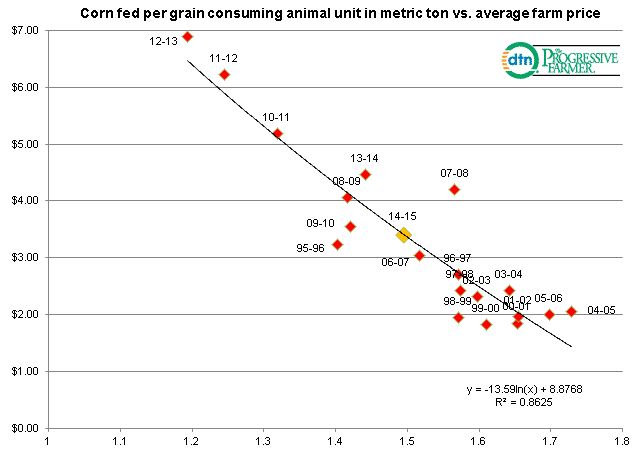Fundamentally Speaking
Corn Feed Demand
In the October world agricultural supply-demand report (WASDE), the USDA lowered 2013/14 corn feed usage by 50 million bushels to 5.125 billion bushels based on the higher than expected September 1 quarterly corn stocks.
Interestingly despite the negative connotations this would have for corn feed utilization this year, the USDA did increase its feed estimate for the 2014/15 marketing season by 50 million bushels to 5.375 billion.
This was based on larger supplies, increased meat production and forecasted lower prices.
P[L1] D[0x0] M[300x250] OOP[F] ADUNIT[] T[]
There are those who feel this move was premature given feed demand that has fallen short of expectations over the past number of years, cheaper alternative products such as feed wheat and distiller's grain and just a modest increase in animal numbers vs. last year of 1.1% when feed demand is projected 4.9% higher.
The accompanying graphic shows U.S. corn fed per grain consuming animal units vs. the average farm price.
Certainly the inverse relation is expected with high corn fed per animal the lower the price and vice versa.
The yellow diamond on the logarithmic trendline has not only a very good fit as evidenced by the high r squared but this year's feed estimate per animal is right on the line.
The trade will have to wait for the first quarterly stocks report of the2014/15 marketing year on January 12, 2015 to see how well feed demand is tracking the USDA projection.
(KA)
© Copyright 2014 DTN/The Progressive Farmer. All rights reserved.






Comments
To comment, please Log In or Join our Community .